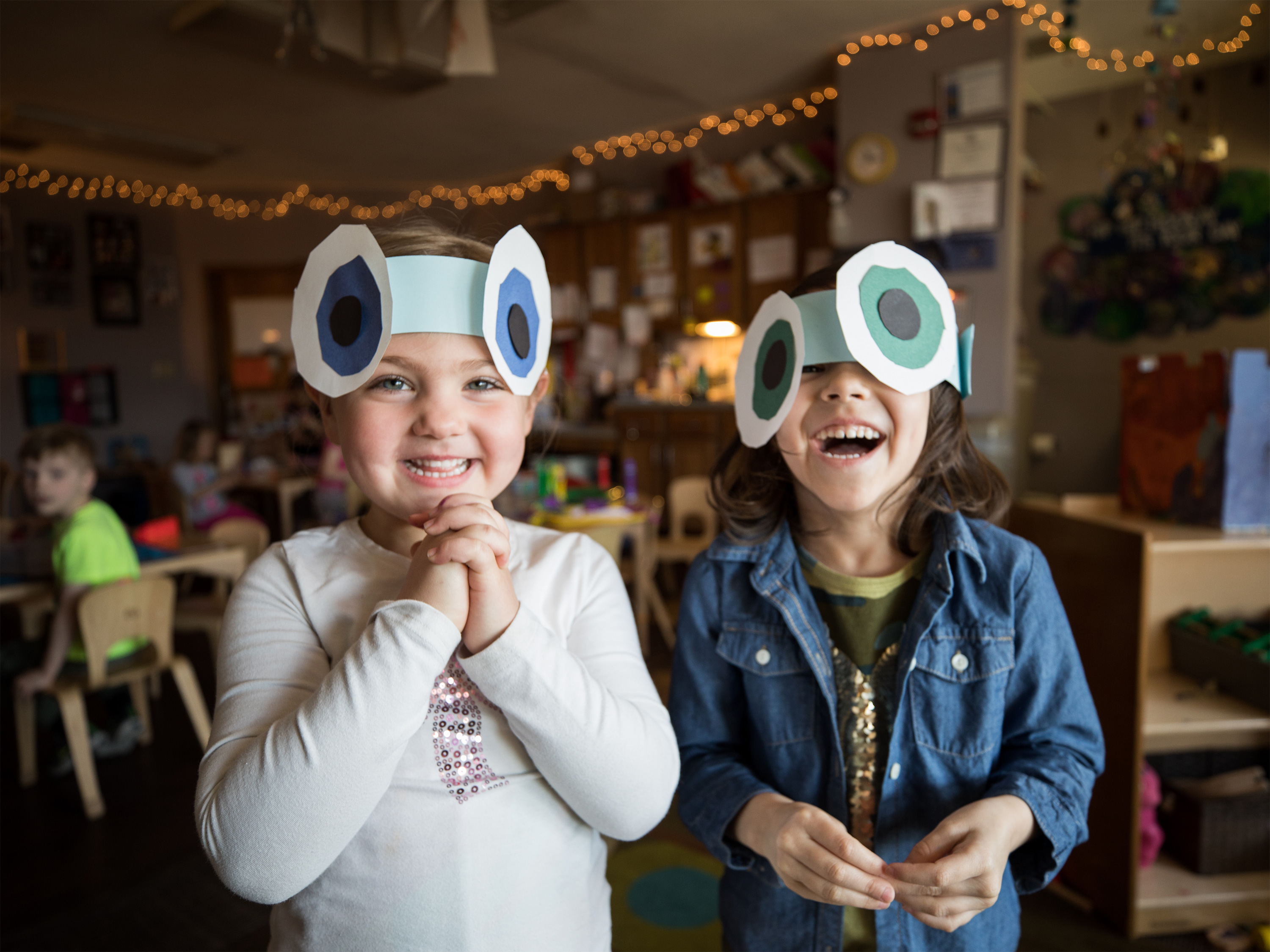Our motto is “Children Learn Best Through Play.” Because all children are unique individuals and learn in different ways, we encourage exploration of materials in play-based settings. Every teacher is responsible for planning and implementing meaningful lesson plans and activities through the use of Developmentally Appropriate Practice.
The CDC also has take home bags that parents can check out to work on at home. Our Homework bags have educational materials and activities that you can do with your child. Our GoBags are for physical activity that includes music, movement and games for the whole family!
Classroom lesson plans and curriculum are in alignment with standards and benchmarks set by the Kansas Early Learning Standards. Individual lesson plans are also created for each child on a monthly basis that are directed at helping each child achieve developmental milestones. A developmental portfolio will be made for each child and follow them as the move from room to room.
The following areas are part of the CDC’s play-based settings used to address social/emotional, physical, sensory, language, cognitive, science, math, social studies and creative and individual development. Each developmental area is incorporated in each classroom from Infant to Pre-K.
An article by Lisa Murphy, The Ooey Gooey Lady® on what it means to be play based
Art Block Play Book Technology Outdoor Cooking Dramatic Play Manipulative Classroom Pets Math Music Science / Cognitive Sensory / Messy Table Writing
Art Center 
At the Art Center, children will learn:
- observation
- recall
- classification
- creativity
- fine motor skills
- emotional expression
- pride
- autonomy
- sharing
- language
They will also develop hand-eye coordination and problem-solving skills. Art encompasses a wide range of activities such as painting, gluing, coloring, cutting, 3D art and collage art.
Block Play Center 

While playing with blocks, children will be involved in:
- creative thinking
- Building
- Manipulating
- Math
- Social Studies
- problem solving
They will experiment with area, space, size, shape, depth, balance, gravity, value, weight, position, stability, language, patterning and cause-and-effect relationships. They will also learn to observe and follow safety rules as well as develop respect for the work of others. You will see several different kinds of blocks in the block area: soft blocks, cardboard blocks, wooden blocks and plastic blocks are some that we have. Other materials that are incorporated in the block center to enhance the educational and imaginative experience include small animals, people, cars and other building materials.
Book Center 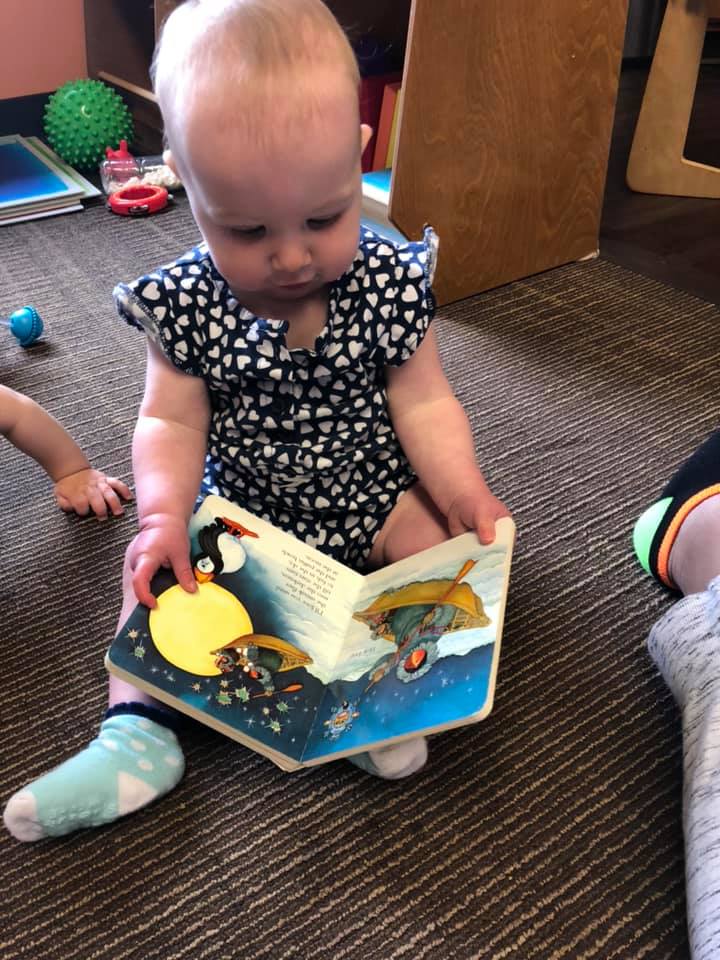
When reading books and being read to, children will learn:
- concept formation
- object labeling
- peer and adult interaction
- sentence structure
- language
- vocabulary growth
- positive attitude toward reading and books
In most rooms the book areas are also areas for the children to get comfortable and relax with soft lighting, fluffy pillows and lots of stuffed animals. You will find child-sized furniture, puppets, babies and blankets for the children in these areas as well. Taking care of books becomes part of a routine as children understand the value of books and develop a love of reading that will last a lifetime.
Technology
While working on the computer, children will learn such skills using the mouse and keyboard to access the screen and develop educational /cognitive concepts based on the particular software. Children are limited to computer time in each classroom. All Classrooms use surface pros to enhance curriculum in a variety of ways through education clips, songs, dances and a variety of other ways. Technology in the classroom is limited as we want children to be able to use their own imaginations and interact socially.
Outdoor Play 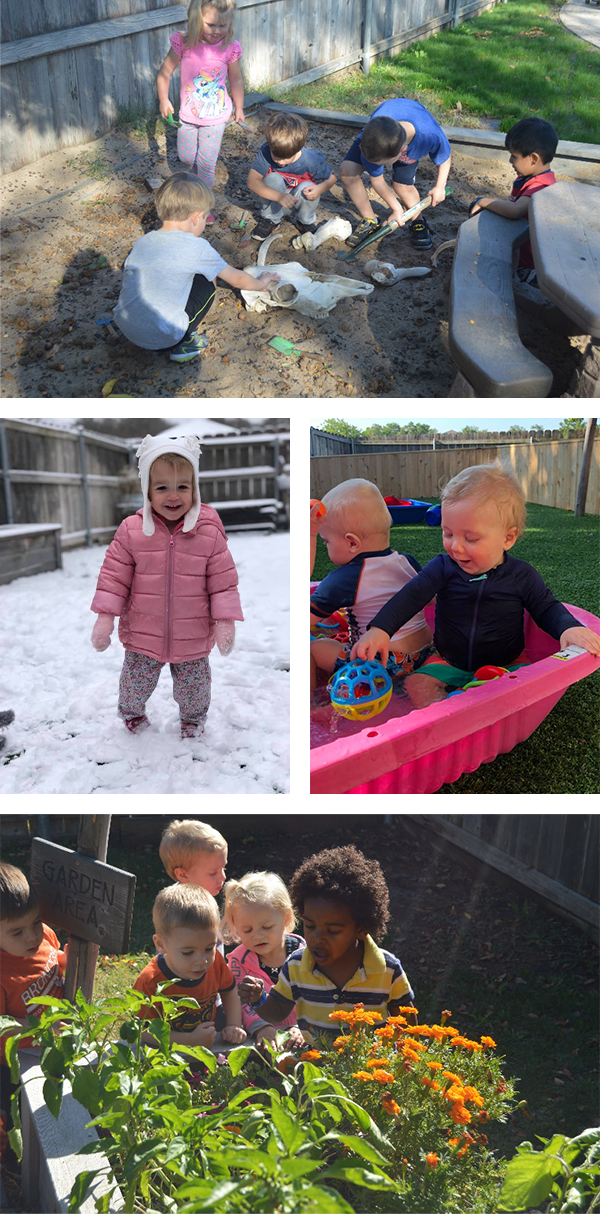
When playing outdoors, children learn about:
- decision-making skills
- problem solving
- autonomy
- large muscle coordination
- social relationships
- language
- imagination
- safety
Outdoor play occurs at least twice a day in every classroom weather permitting. Outside you will see developmentally appropriate equipment, swings, slides, bikes, sandboxes, seesaws, water tables and other toys such as blocks, cars and babies. Nature walks are taken with teachers and the children have free range of the playgrounds which are secured by a locked privacy fence.
Cooking Center 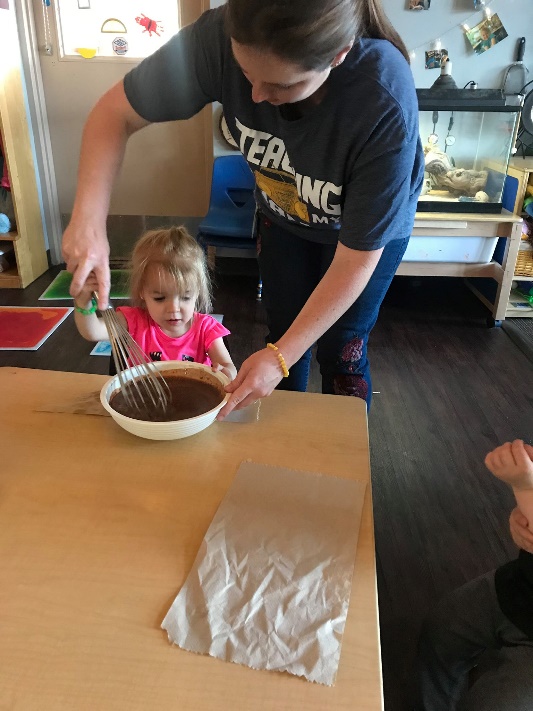
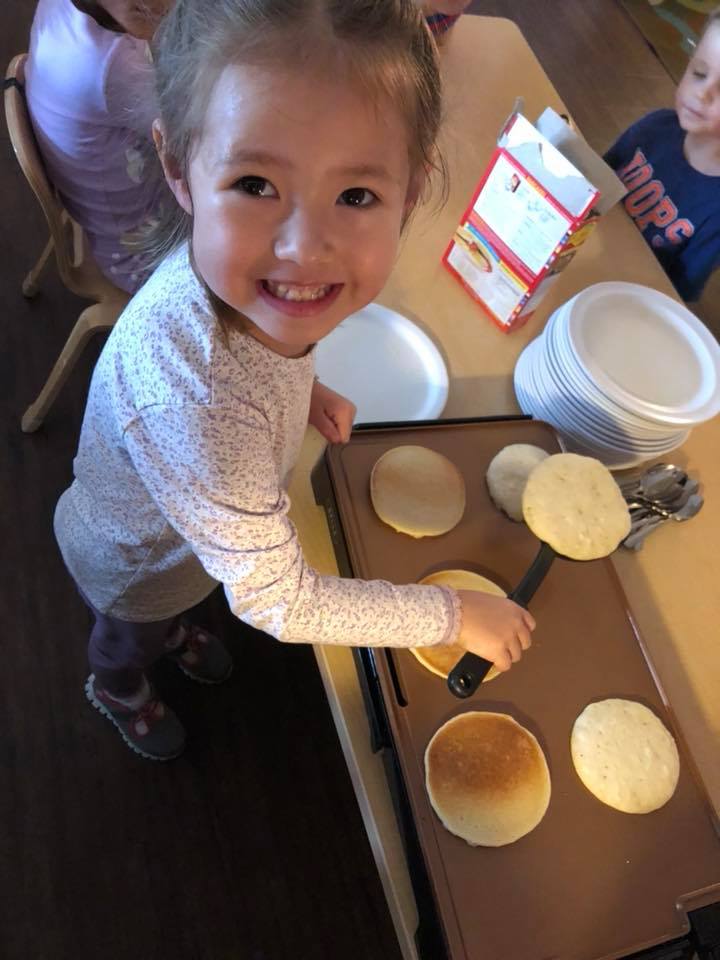
While involved with cooking, children will learn:
- self-esteem
- safety
- cooperation
- nutrition
- health
- task completion
- language
- direction following
- cause-and-effect relationships
- measurement
- concept information
We apply for grants throughout the year that provide us with the opportunities to grow fresh gardens and purchase a wide variety of education al materials to help children learn and grow through cooking.
Dramatic Play Center 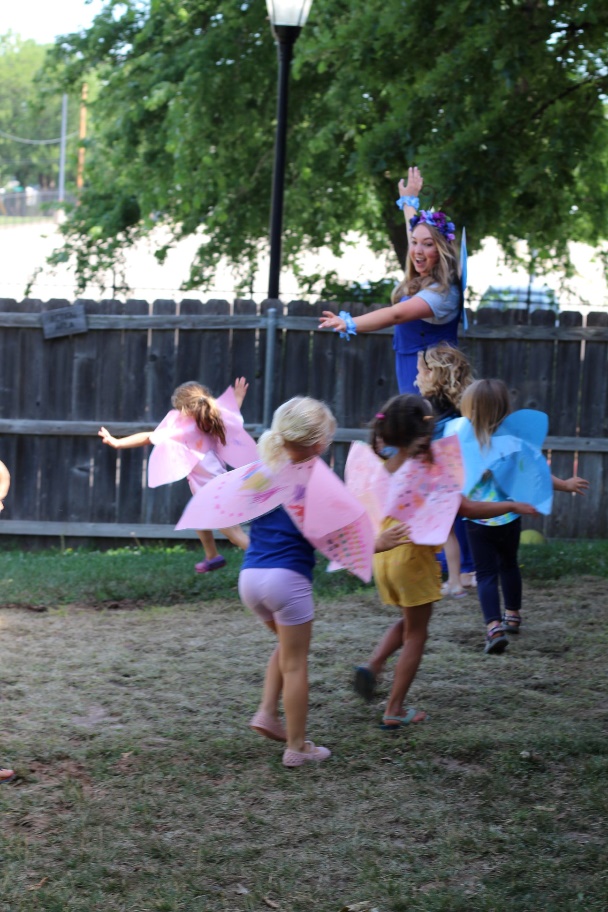
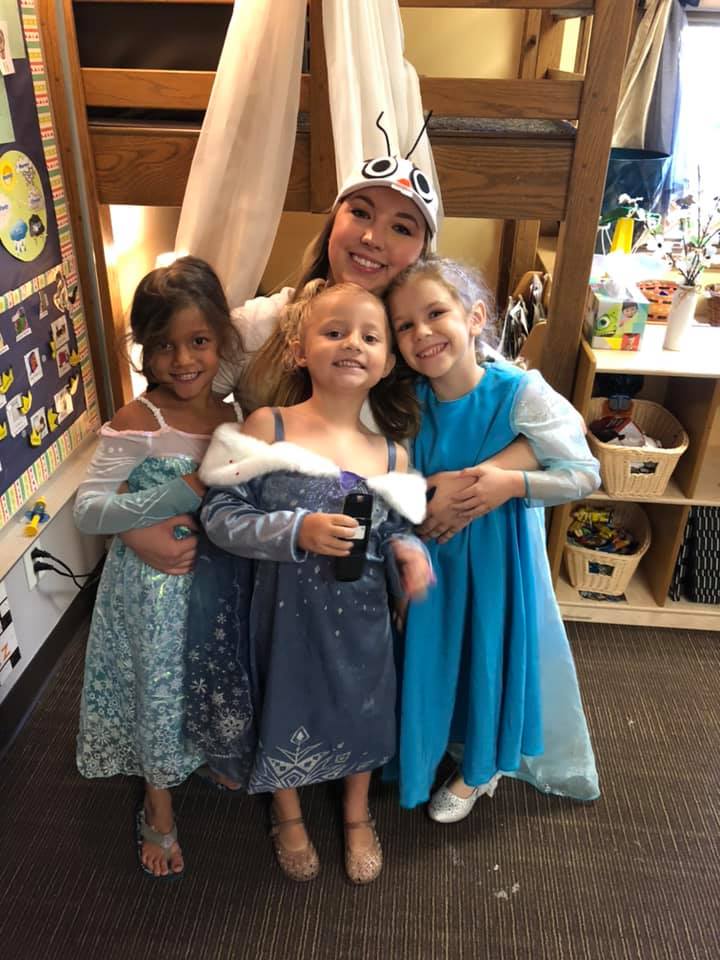
During dramatic play, children will learn:
- socialization
- representation
- language
- coping strategies
- sharing
- cooperative decision making
- imagination
- to value other peoples cultures, values, places and people
- problem solving skills
Here children have a wide range of toys to choose from. They have dress-up clothes, babies, kitchen toys, a kitchen, puppets, dollhouses, cars, tools, jewelry and car garages, just to name a few. In the dramatic play area they take on family and community roles that help them understand what people do and how they act. In essence, they have an opportunity to try on a role to see if it fits their personalities. We incorporate each child’s culture, language and props into the rooms so that each child feels special and unique.
Manipulative Center 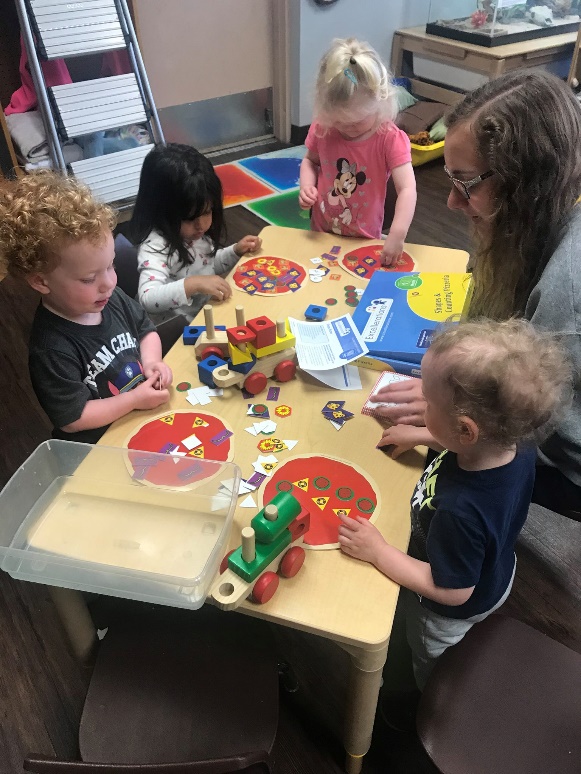
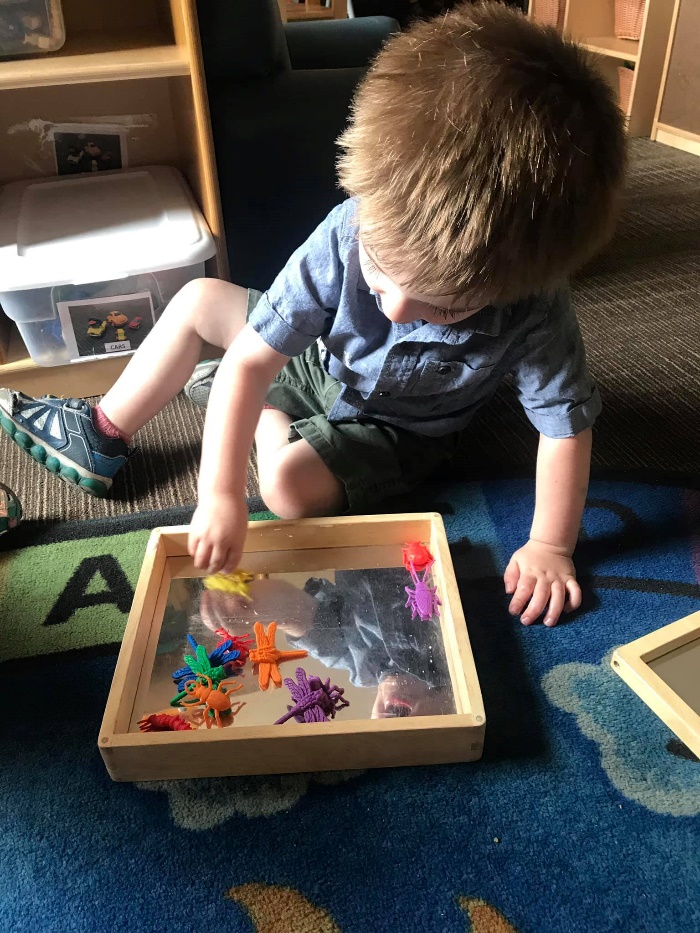
While working with manipulatives, children will learn:
- problem solving
- decision making skills
- peer interaction
- self-discipline
- relationships
- dexterity
- task completion
- classification
- sequencing
- number concepts
- visual discrimination
- self-concept
- fine motor control
- eye-hand coordination
Some things that you may find in this center would be string beads, connecting beads, puzzles, peg boards, sorters, tweezers and activity boxes. Each room has a variety of activities to choose from so that the children can learn at their own pace with things that interest them.
Classroom Pets 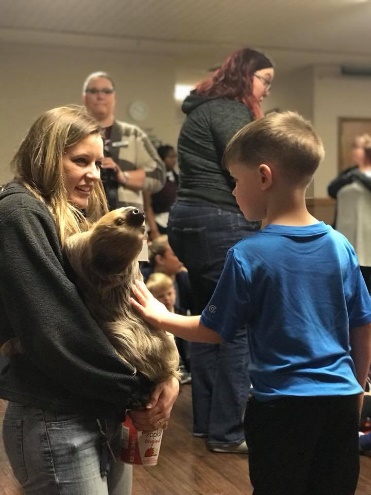
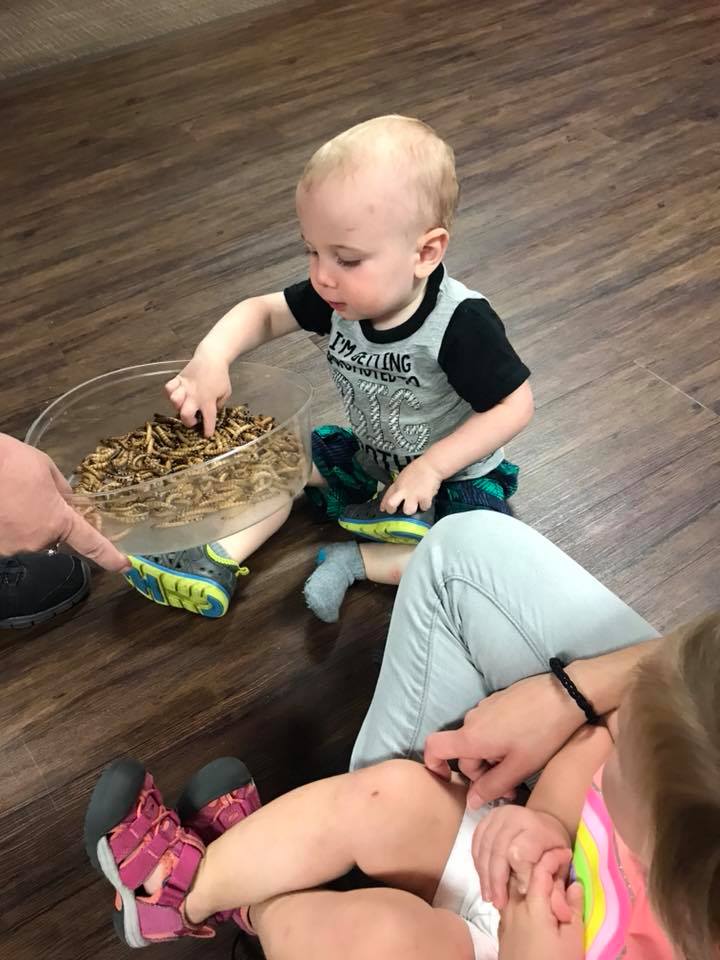
Engagement with classroom pets teaches children
- Compassion
- Responsibility
- team work
- Character
- Sympathy
Each classroom has a living pet that the children learn about, help take care of and watch grow
Math Center
While working on math, children will learn comparison, measurement, classification, counting, operations, number concept, spatial relationships, sets, language and problem solving. Math centers incorporate such things like scales, measuring cups, counters and sorters, flash cards and a number of other activities to help a child become familiar with math and all the fun that comes along with it.
Music Center
Dancing and listening to music teaches children:
- emotional expression
- positive self-concept
- creativity
- awareness of self and others
- listening
- communication
- following directions
- creative movement
- imagination
- language
- beat and tempo
Things that are brought into the classrooms for this area include music instruments, musical props (streamers, batons, etc.), all types of music on CDs, pianos, drums and more. Here your child will also learn about different cultures and the instruments and music they listen to; imitation and repeat patterns; to create and compare words, vocabulary and actions from songs and finger plays; and fine and gross motor skills from playing instruments. The CDC also has a music teacher that comes in once a week to teach music to the kids, sing and dance with them.
Extra activities
- tap and tumble
- Happy feet
- Happy hops
- Footwork
Science / Cognitive Center 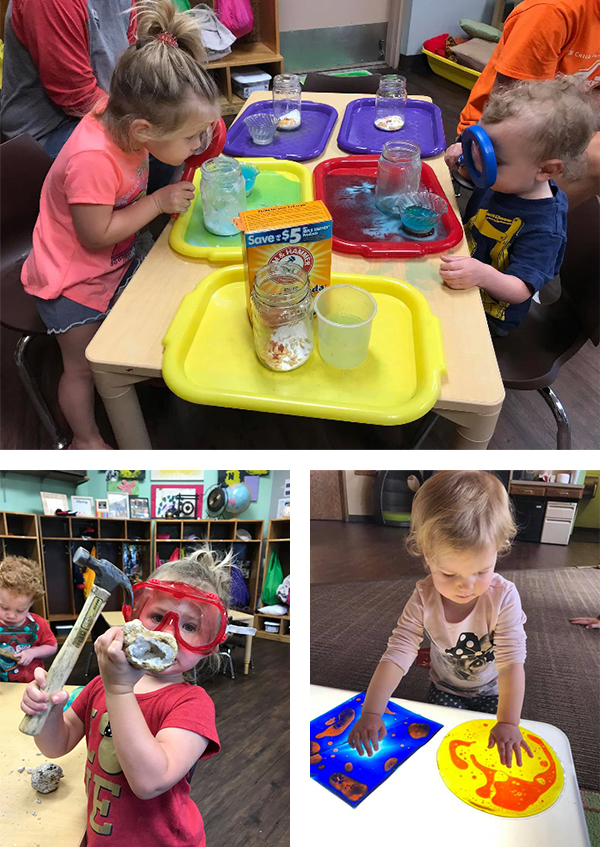
In the science area children will learn about seasons, sharing, physical changes in the world (life cycles, season changes, senses, body parts rain, etc.), measuring, pouring, weight, volume, creativity, solids, liquids, balance, imagination, fine and gross motor skills, conducting experiments and eye hand coordination.
Things you may find in the classrooms are
- measures
- weights
- bug blocks
- globes
- maps
- fossils
- trees
- flowers
- classroom pets
- solar systems
- science/cognitive books and posters
- nature materials (rocks, pine cones, sea shells, etc.)
- thermometers
- rulers
- play animals/bugs/people.
Sensory Center / Messy Table 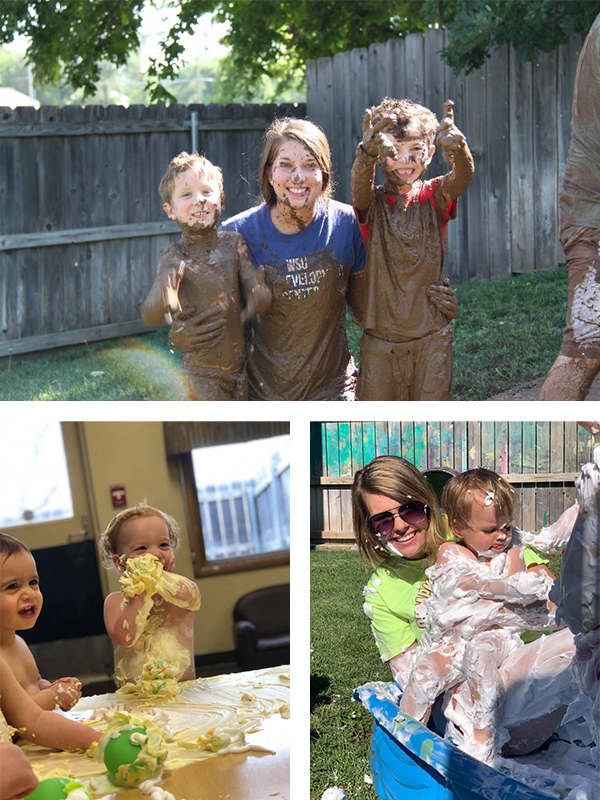
While working with sensory exploration, children will learn:
- large and small motor control
- hand-eye coordination
- identification of properties
- measurement, comparison
- observation
- evaluation
- prediction
- cause-and-effect relationships
- cooperation
- social interaction
- language
- sharing
Sensory experiences are also meant to expose children to various types of foods, textures and experiences that they may not otherwise get exposed to. There are several things that involve sensory experiences within the classrooms, and the main one is the use of the messy tables, located in each classroom and outside. In the messy tables, children will experience things such as oatmeal, cornmeal, pasta, beans, rice, sand, water and flour to name a few.
Sensory experiences can also be activities such as swimming in water, playing in a pool of flour or even a bucket of spaghetti. Sensory experiences can also be found at the tables with Play-Doh, volcanoes, pudding, goop, lotion and shaving cream.
Writing Center
When learning to write, children will learn organization, fine motor control and language skills including letter formation and recognition. Writing is a great way to express yourself and the children love to color, draw and be creative. Preschool classrooms will work on forming and writing letters and our Pre-K classroom will work more on this so that they have mastered this skill for Kindergarten. You will be able to track your child's progress in their developmental portfolios. You will see how dots become people and lines become letters.


